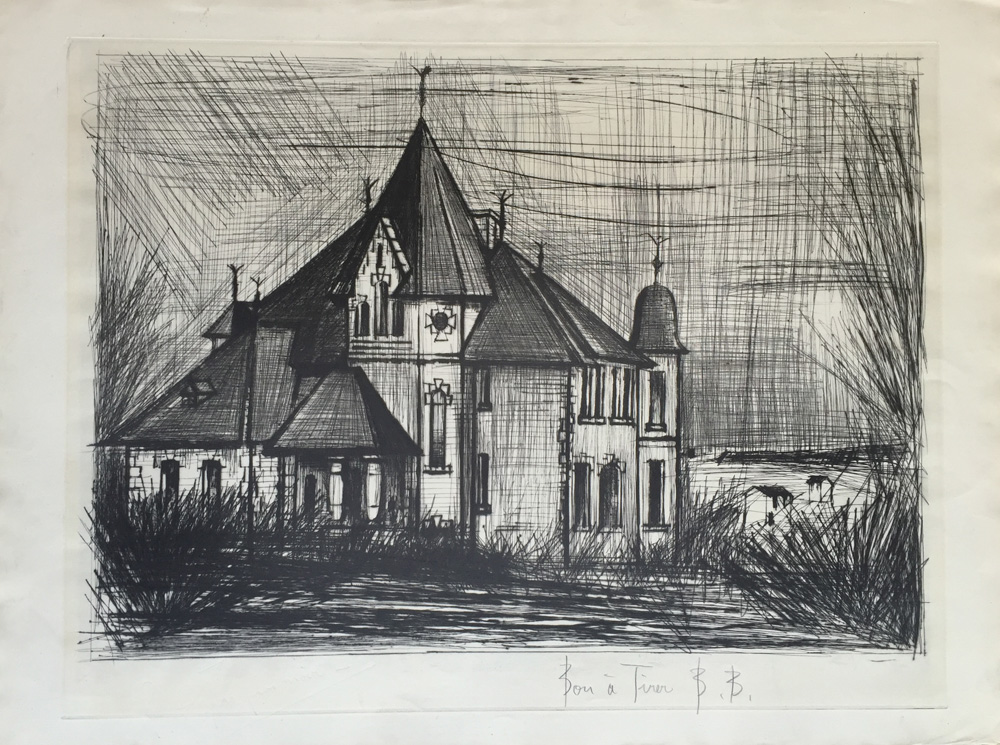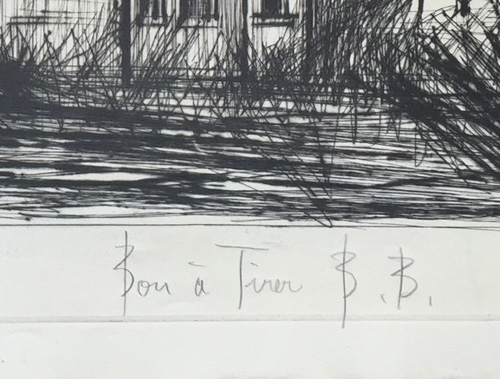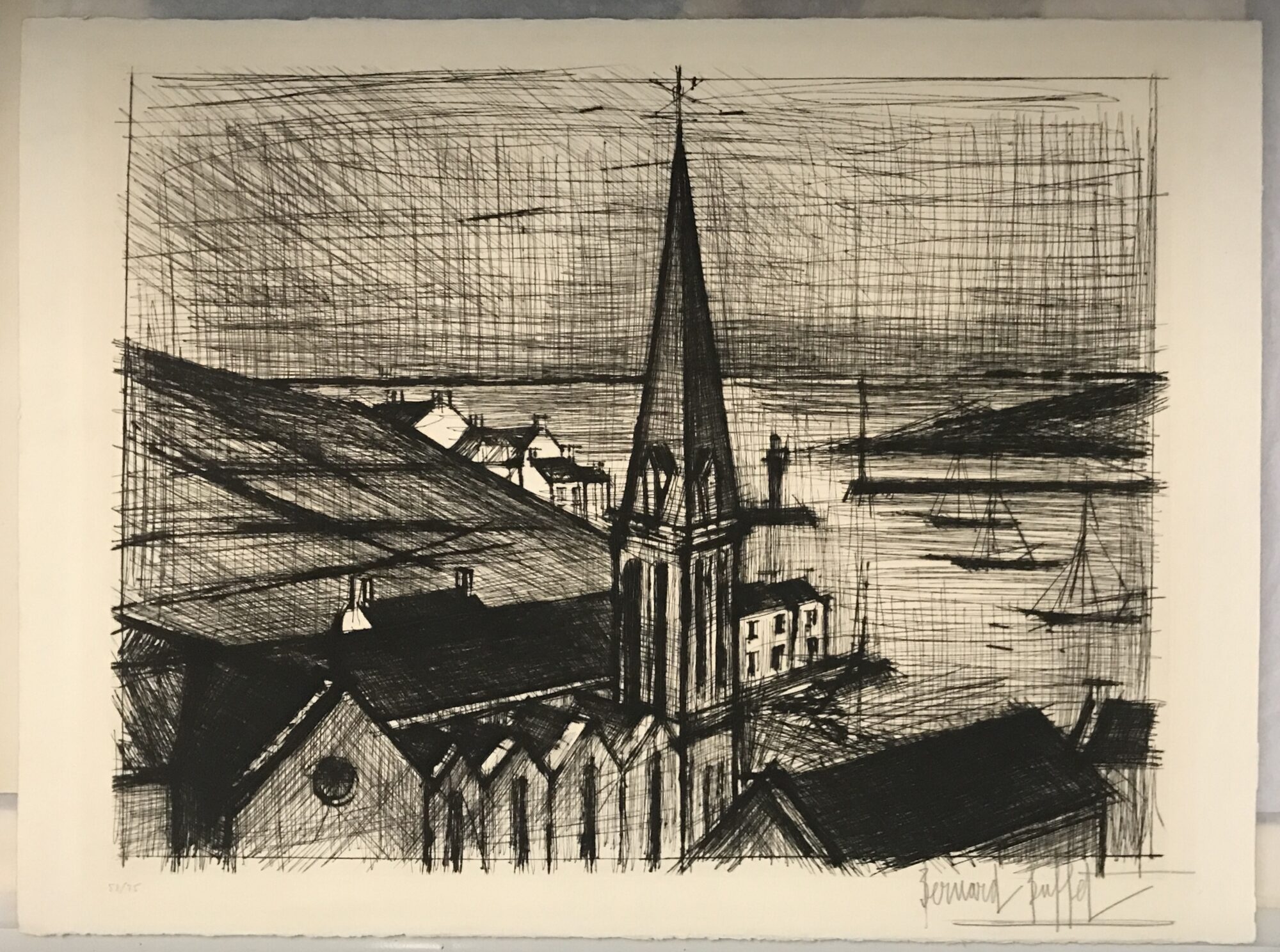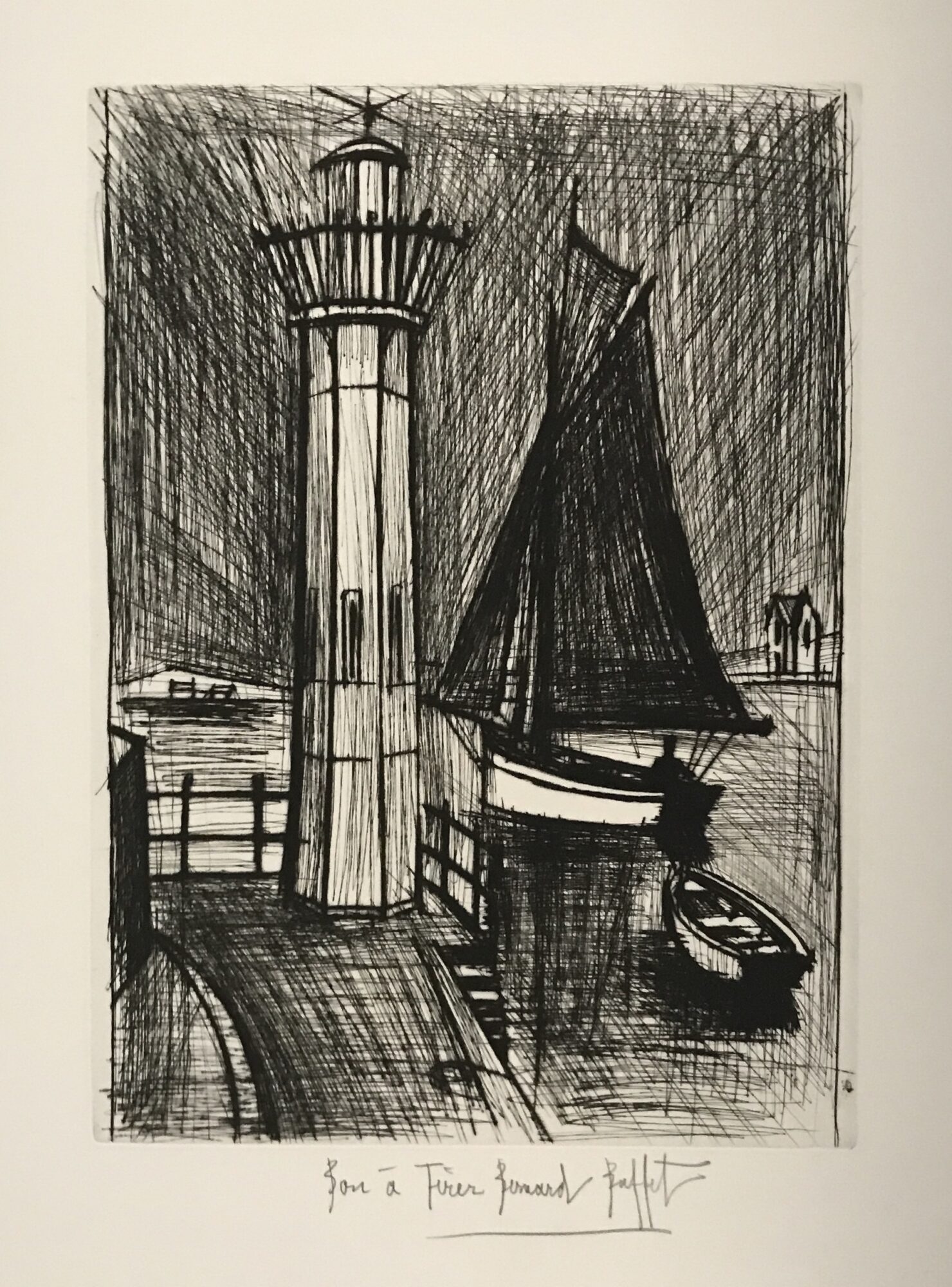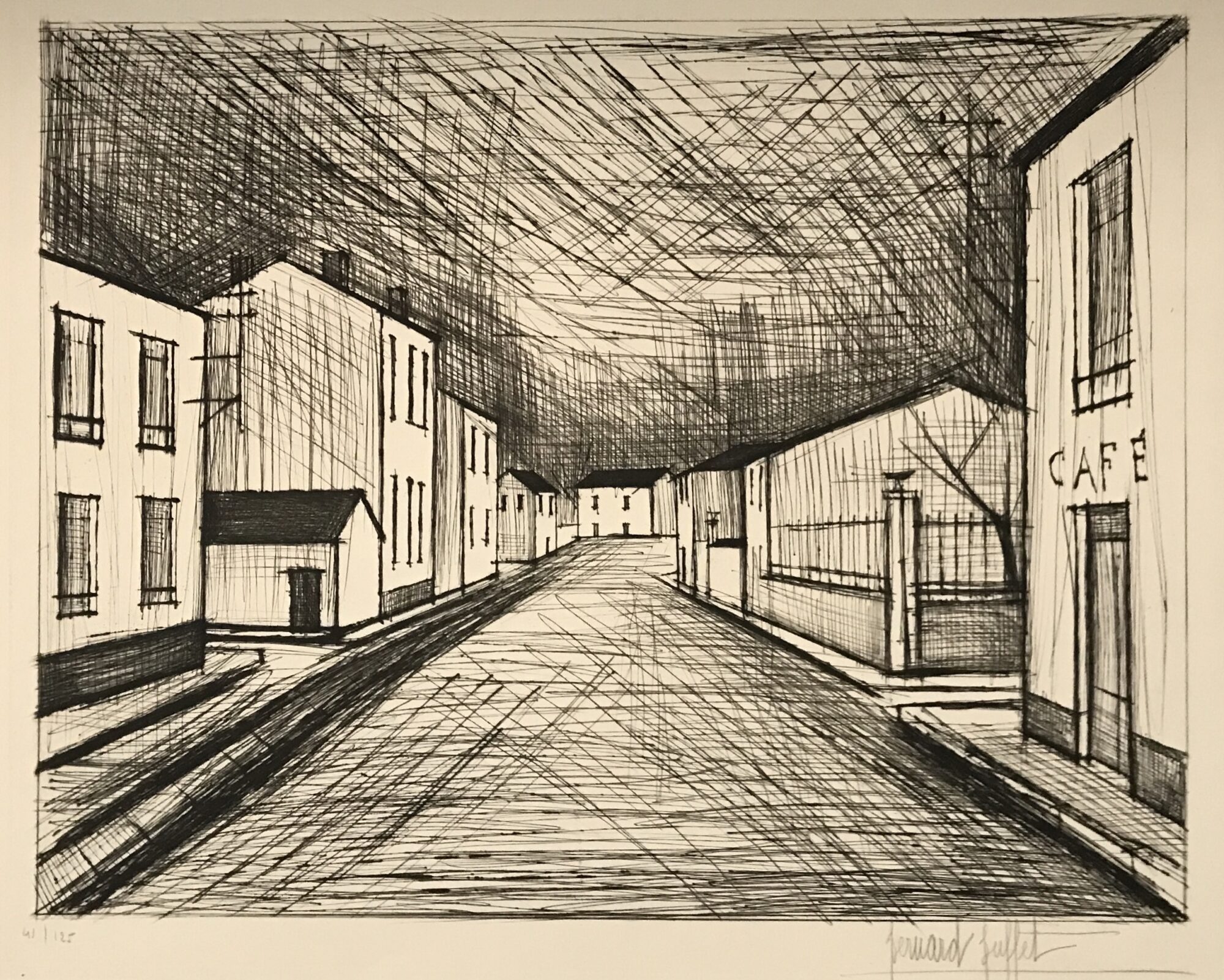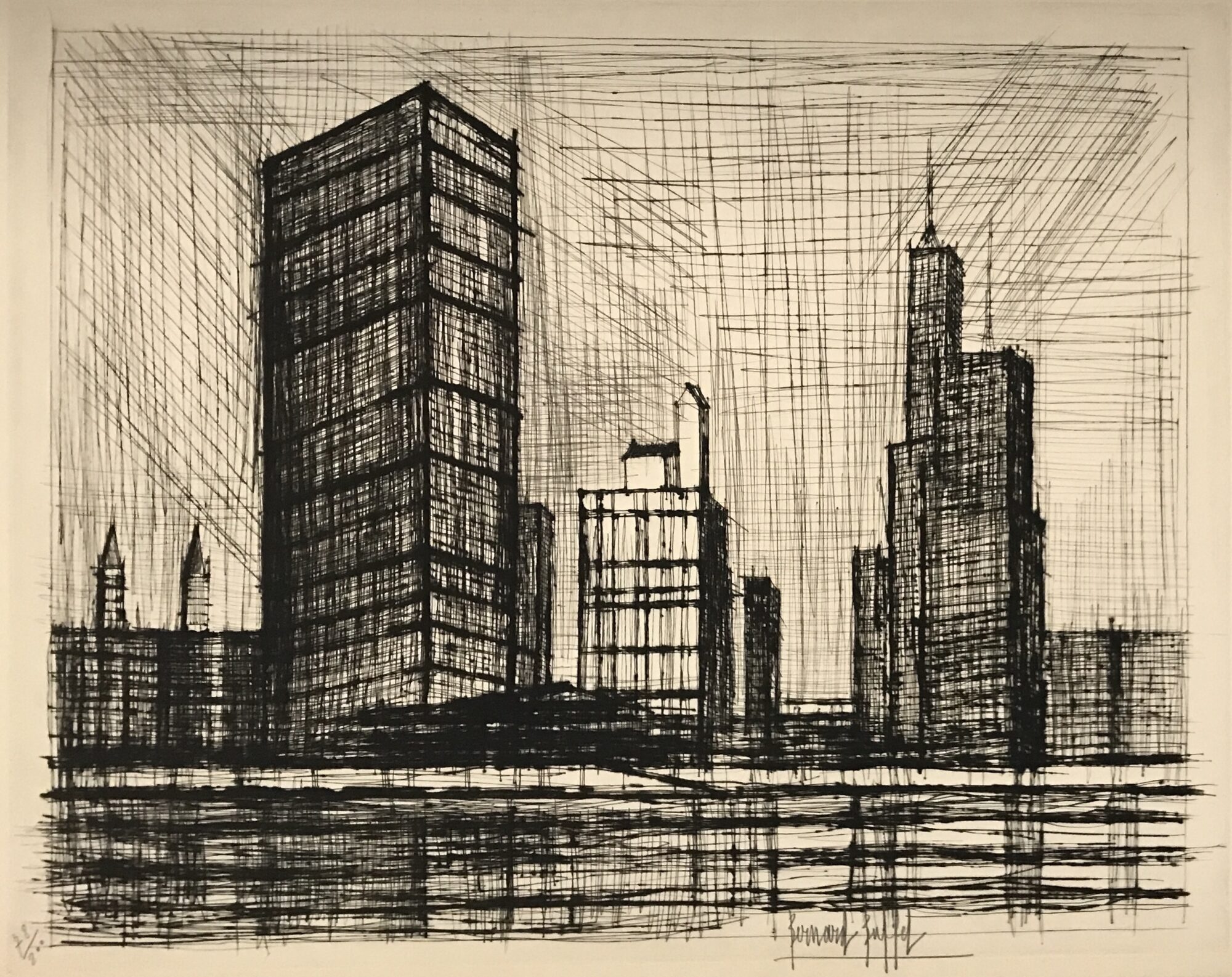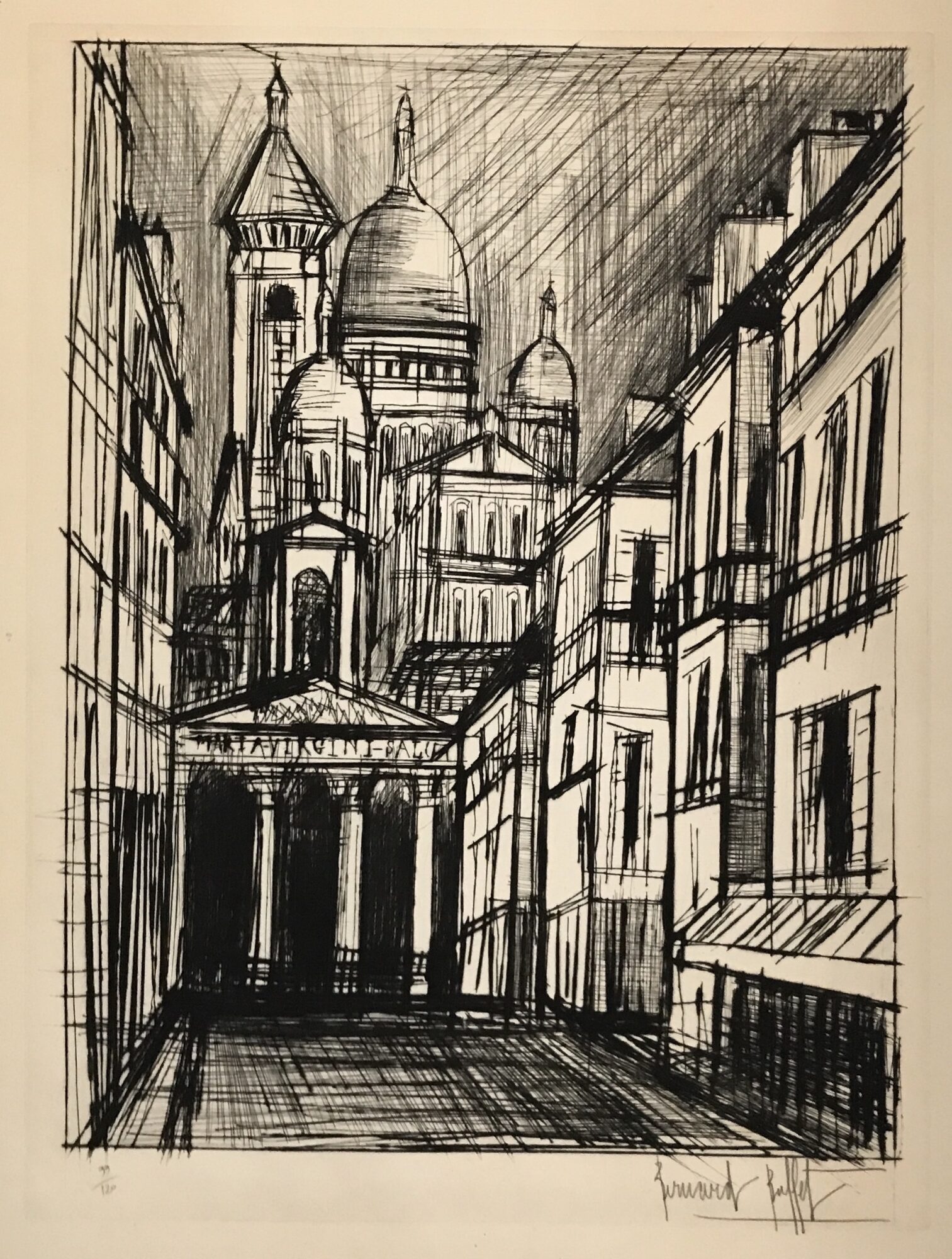Bernard Buffet – Chateau de la Vallee
Bernard Buffet, Chateau de la Vallee is an original drypoint engraving . This print is initialed “B.B” and annotated “Bon a Tirer” in the lower center of the print. Printed by Atelier Lacouriere et Frelaut. Rheims 50.
Bernard Buffet was a French Expressionist painter. Best known for his representational work, Buffet’s paintings are often figurative, graphic, and central in their compositions.
Bernard Buffet’s painting conveyed the anxiety that permeated France during the Nazi occupation and came to dominate the post-war figurative art scene. A member of a group called L’Homme Témoin (The Witness) along with Bernard Lorjout and André Minaux, Buffet developed a realist style infused with social criticism, featuring a restrained palette and black outlines.
Chateau de la Vallee is defined by “dry” straight lines revealing the shape of buildings and bodies. His works show elongated, emaciated figures and structures and lend a feeling of despair and loneliness. He shows Paris itself, traditionally portrayed as lively and colorful, in a hard and lifeless manner.
| Title | Chateau de la Vallee |
|---|---|
| Medium | Engraving |
| Year | 1965 |
| Edition | BAT |
| Catalogue Raisonné | Rheims 50 |
| Signature | Signed |
| Size | 22 x 29.75 (in) 56 x 75.5 (cm) |
| Price | SOLD |
Description
Bernard Buffet, Chateau de la Vallee is an original drypoint engraving . This print is initialed “B.B” and annotated “Bon a Tirer” in the lower center of the print. Printed by Atelier Lacouriere et Frelaut. Rheims 50.
Bernard Buffet was a French Expressionist painter. Best known for his representational work, Buffet’s paintings are often figurative, graphic, and central in their compositions.
Bernard Buffet’s painting conveyed the anxiety that permeated France during the Nazi occupation and came to dominate the post-war figurative art scene. A member of a group called L’Homme Témoin (The Witness) along with Bernard Lorjout and André Minaux, Buffet developed a realist style infused with social criticism, featuring a restrained palette and black outlines.
Chateau de la Vallee is defined by “dry” straight lines revealing the shape of buildings and bodies. His works show elongated, emaciated figures and structures and lend a feeling of despair and loneliness. He shows Paris itself, traditionally portrayed as lively and colorful, in a hard and lifeless manner.
While predecessors like Renior and Caillebotte used rain and stippled light to give beauty to each Parisian world they depicted, Buffet shows us the grace in the city’s structure, relying on the importance of drawing, the basis of all great work. This fundamental and visually heavy approach actually shows us the underlying beauty of such a popular and visually pleasing city.
Buffet was born in Paris in 1928 and grew up during the Nazi occupation, enduring the war and years of deprivation, and the experience inspired much of the glum imagery in his work. He excelled in painting and drawing, winning prestigious prizes and attracting attention with a signature style recognizable by thick, angular black lines that outlined his somber themes.
Born in Paris, France on July 10, 1928, the artist took his own life after a prolonged battle with Parkinson’s disease on October 4, 1999 in Tourtour, France at the age of 71.
Additional information
| Title | Chateau de la Vallee |
|---|---|
| Medium | Engraving |
| Year | 1965 |
| Edition | BAT |
| Catalogue Raisonné | Rheims 50 |
| Signature | Signed |
| Size | 22 x 29.75 (in) 56 x 75.5 (cm) |
| Price | SOLD |


